Ellipsis
Timeline: January 2022 - February 2023
Site: Austin, TX
Course: DEA3301 Design UX with Technology Studio
Team: Lily Stern, Caleb Cambron, Ethan Shao
Role: 3-D modeler and Researcher
Programs: Revit, Sketchup, Enscape, Photoshop,Illustrator, InDesign
Objective: To design several critical areas within this new assisted living facility. The proposal should include spaces that support healing, restoration, and connection for an aging resident with varying levels of need. The design should create a seamless resident experience through interior architecture and thoughtful design. In addition, the design requirements within the assisted living environment are evolving as we research and learn more about COVID-19’s effects on this resident population and should be considered.
Those moving into Assisted Living Facilities often face significant losses of privacy, space and freedom (Zimmerman, et al., 2016). Coupled with entrenched stigma and increasing health concerns, the move to a residential care facility can often dramatically decrease one’s quality of life (Boggatz, 2020). Ellipsis redefines what a long term care facility can look like, not just to improve the quality of life as one ages, but to make this next step, a welcomed step. Research shows that connection to a personal philosophy and autonomy are the key factors in supporting residents in this new phase (Cater et al., 2022 & Iwasiw et. al., 1996). Ellipsis, guided by three principles—biophilia, homeyness, & agency—supports residents’ exploration of their identity, well-being and control in almost every corner (or curve) of the building.
The architectural plan is driven by the Intimacy Gradient. The reception and quasi-private seating arrangements are grouped at one end of the building. All resident rooms then snake the edges of the building to provide natural light and acoustic privacy. The public spaces run the diagonal middle of the building, preventing noisier congregations from impeding on resident privacy. Walls and wall systems muffle sound from these public spaces as well. Within these larger public zones sit smaller groupings. Set off to the side or walled by plants and the aquarium, they allow residents to have more agency over their social interaction. This gradient allows residents to determine when and where they’d like to connect–with others or themselves.
Given the painful burnout of caretaker staff, this sense of agency and community is critical for not only the residents, but all who inhabit the building. Via a ‘serenity room’ and communal lounge, the staff break room shares a similar gradation of public and private zones. The serenity room contains a daybed for naps, large windows to the surrounding view, sound proof walls and lighting controls. This provides staff the ability to recharge or take a sensitive phone call.
Residents’ rooms contain custom built shelving to maximize storage while providing a refined built-in element. The acoustic beams provide a strong sense of homeyness while also absorbing noise pollution. Oak wood LVT in the bedrooms, circulation spaces, and dining room were chosen over carpeting due to their ability to minimize falls (Simpson et al., 2004). Acoustic ceiling baffles in the dining room make up for the lower NRC of the LVT flooring. In the noisier lounge and common area, low pile carpeting provides a hard enough surface to easily navigate wheelchairs over while still absorbing noise.
The aquarium in the reception is a node of attraction that not only acts as entertainment, but also soothes and instigates conversations amongst residents (DeSchriver & Riddick, 1990).
Wayfinding is guided by cove lighting that wraps around the walls, taking you from one public space to the other.
Ellipsis Center for Living encourages residents to find their voice and emboldens staff to respect their needs. Ellipsis will provide the empowerment that the ‘...’ implies: that there’s so much still to be said.
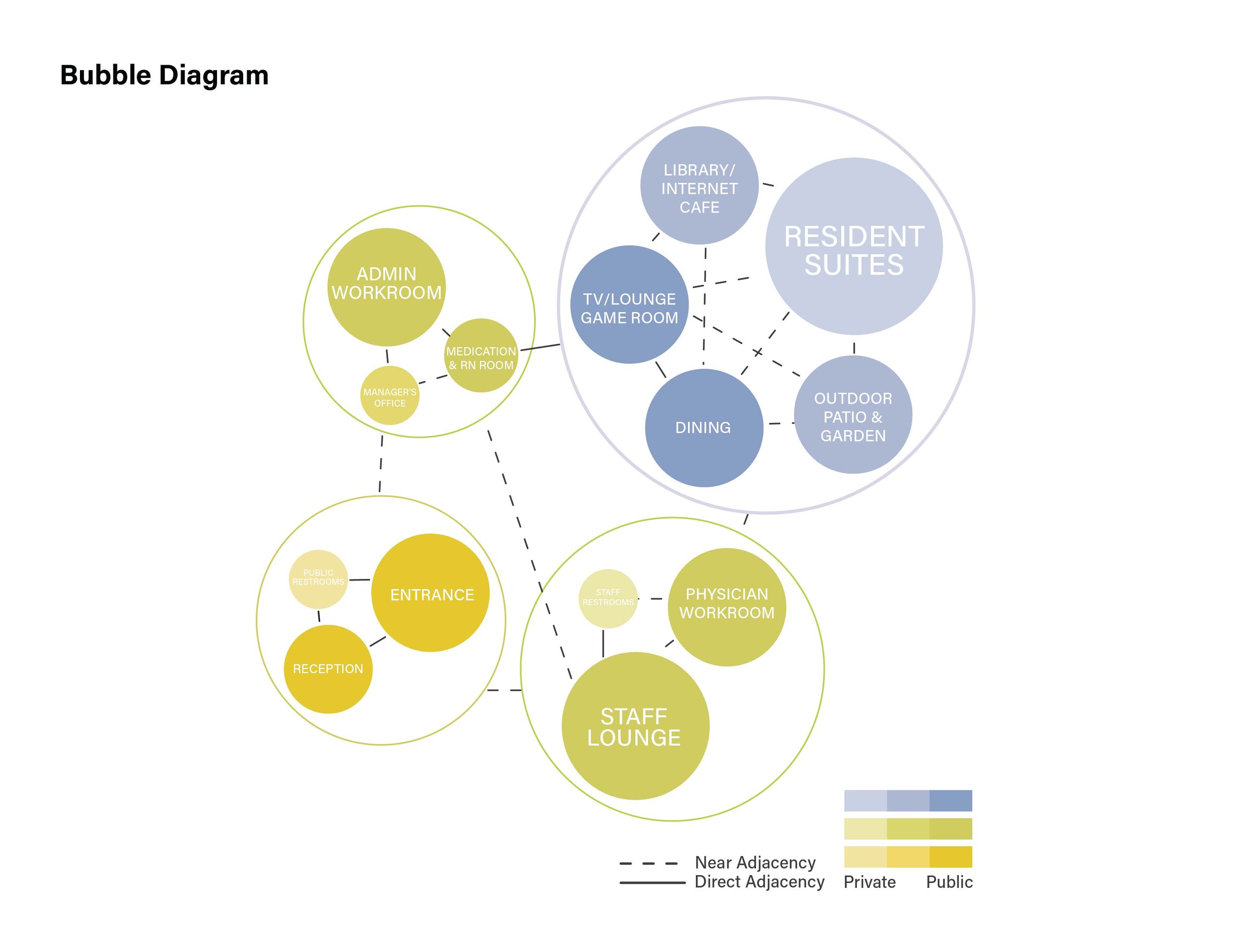
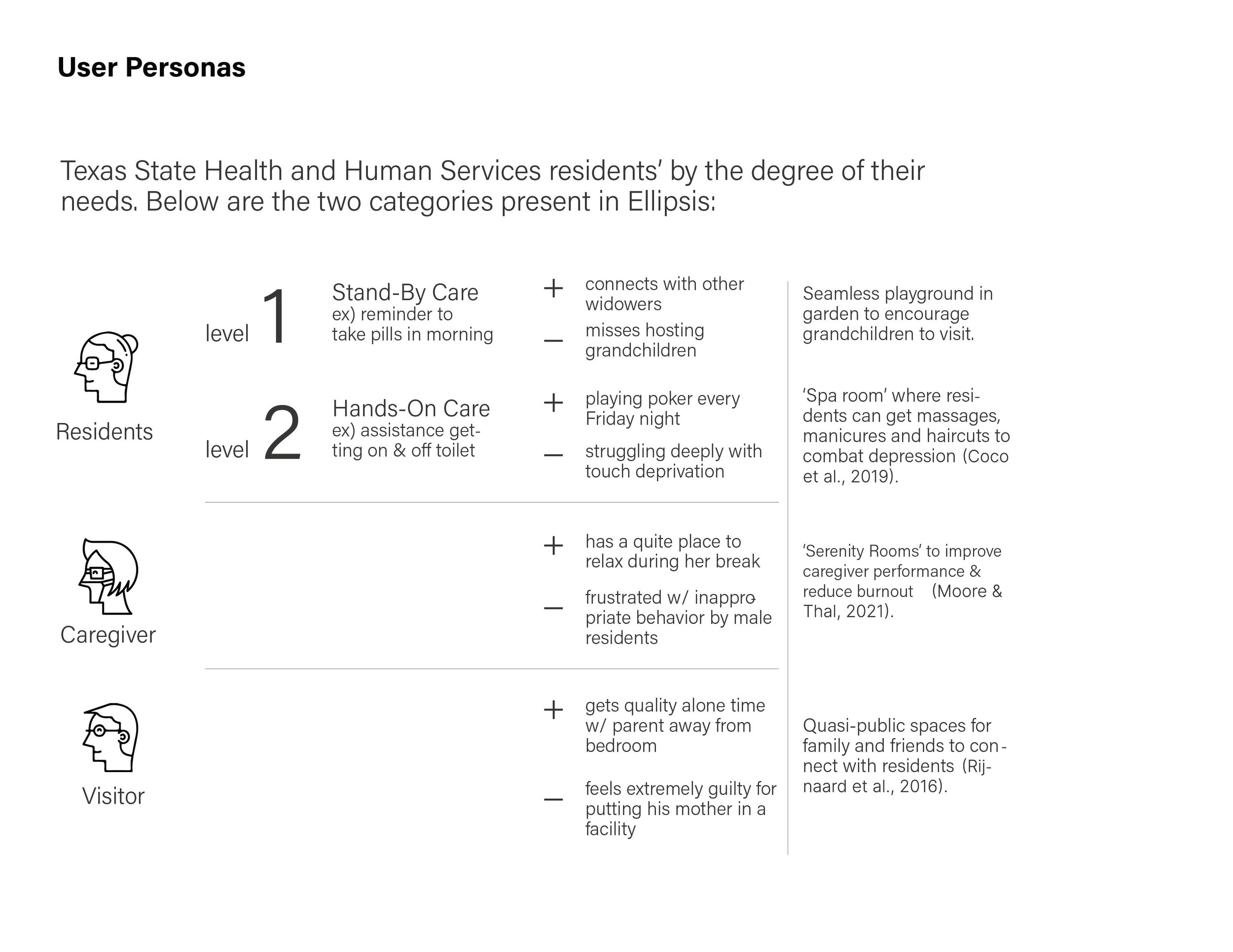

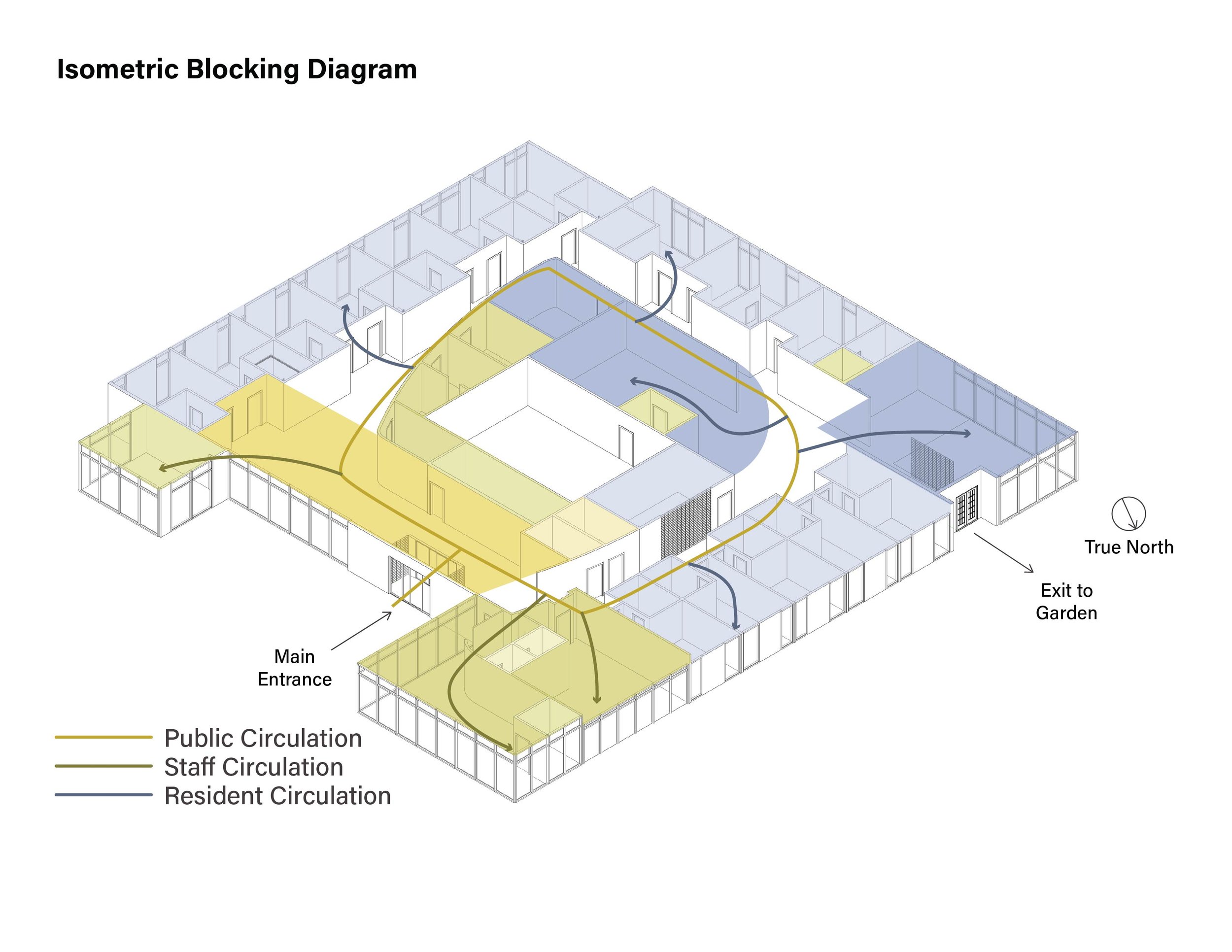
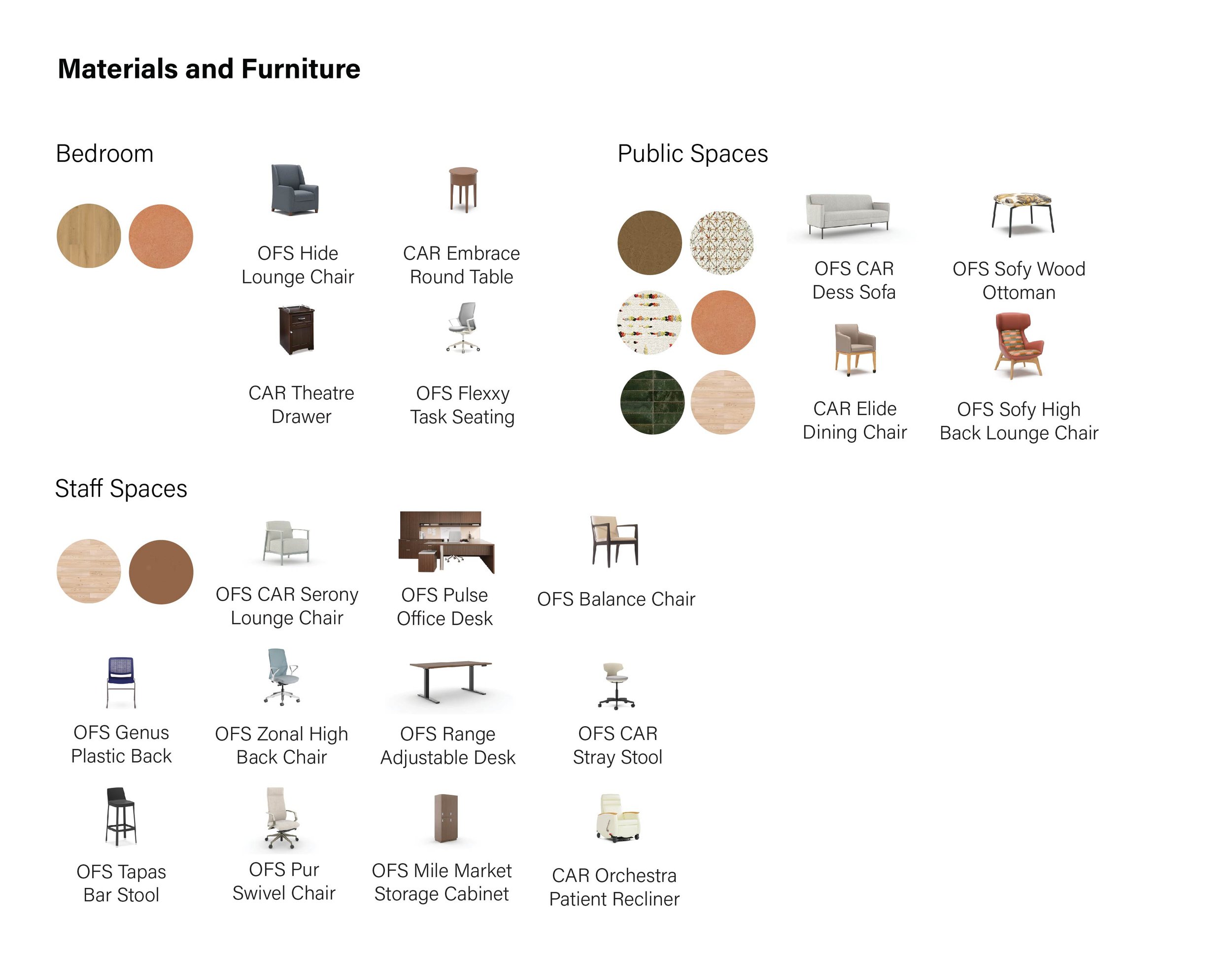
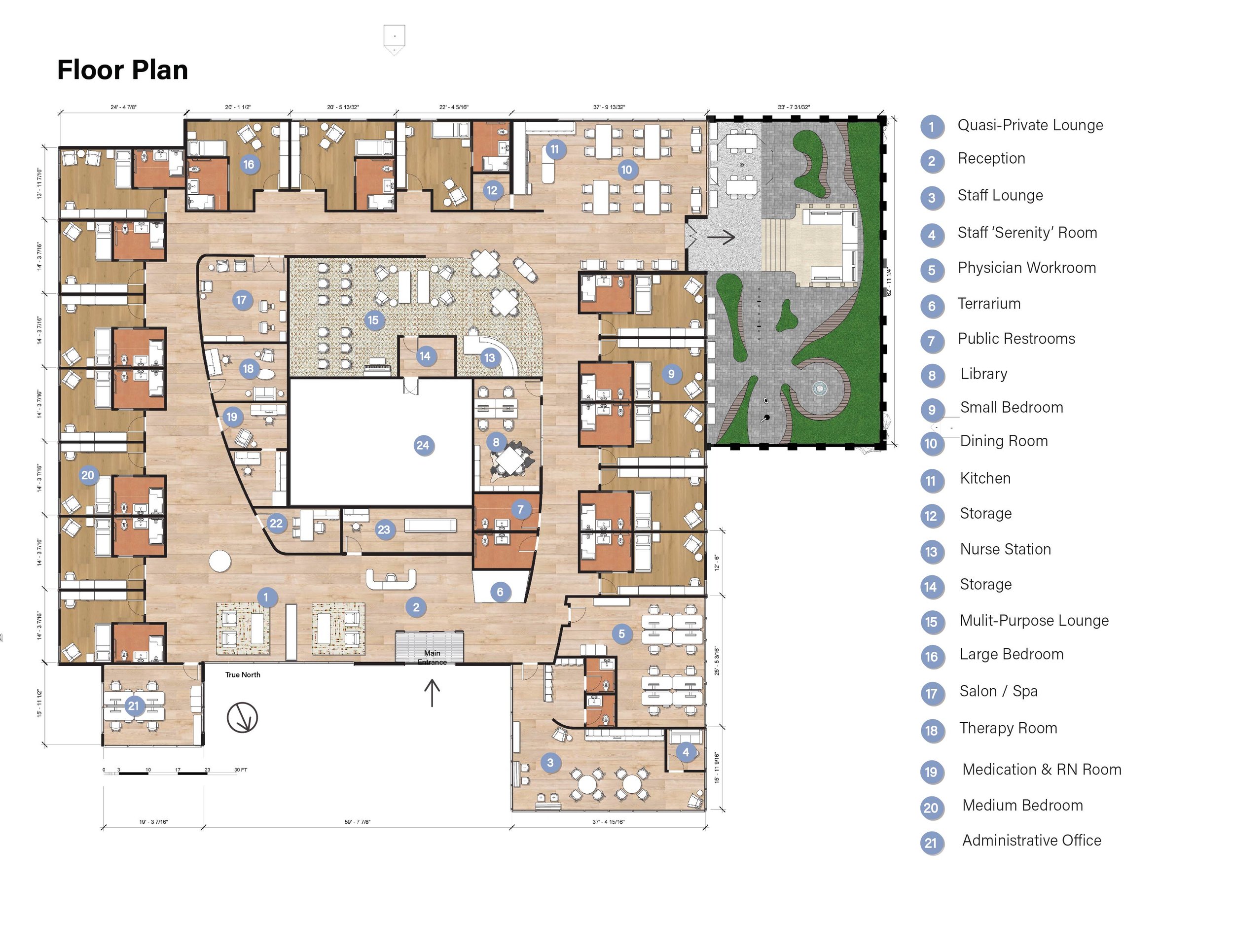
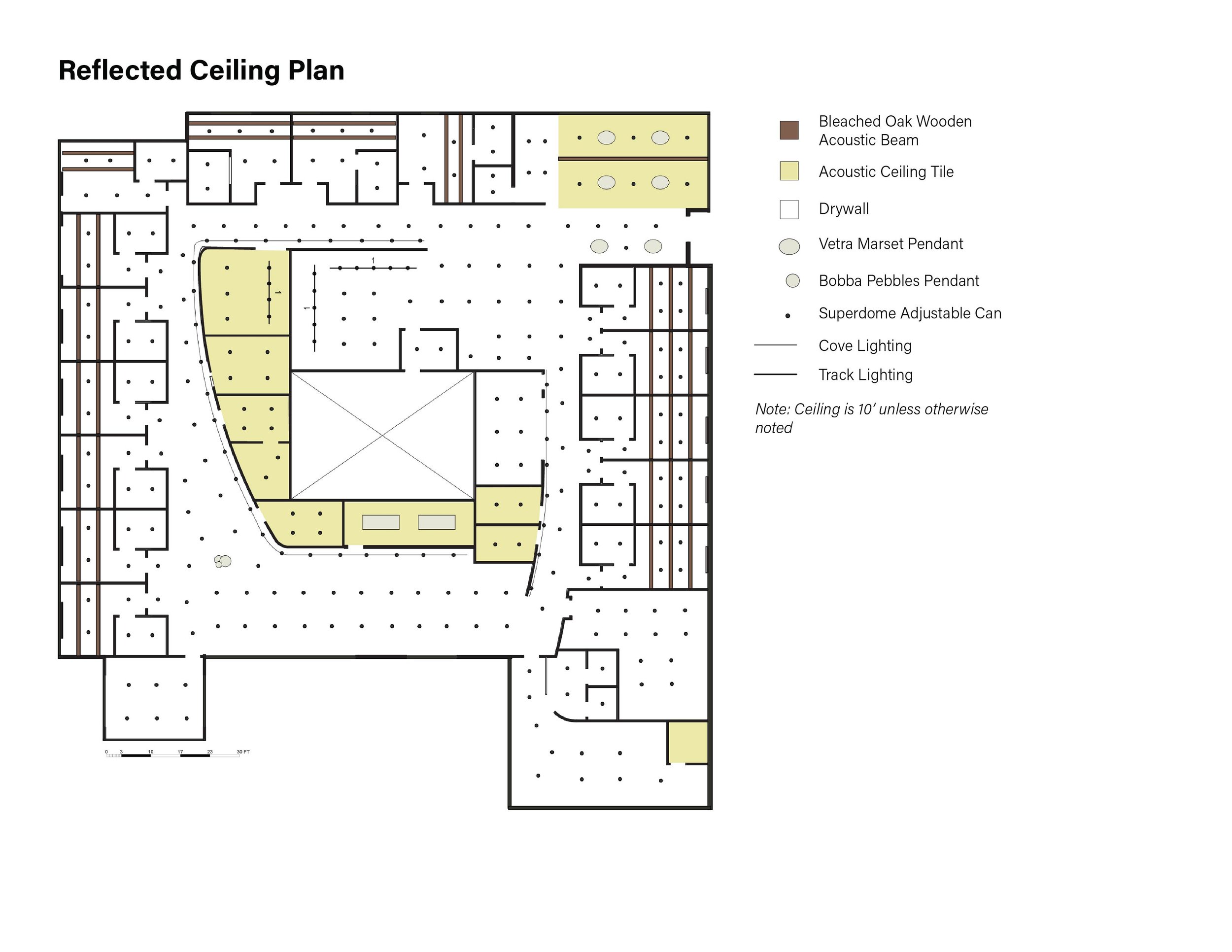
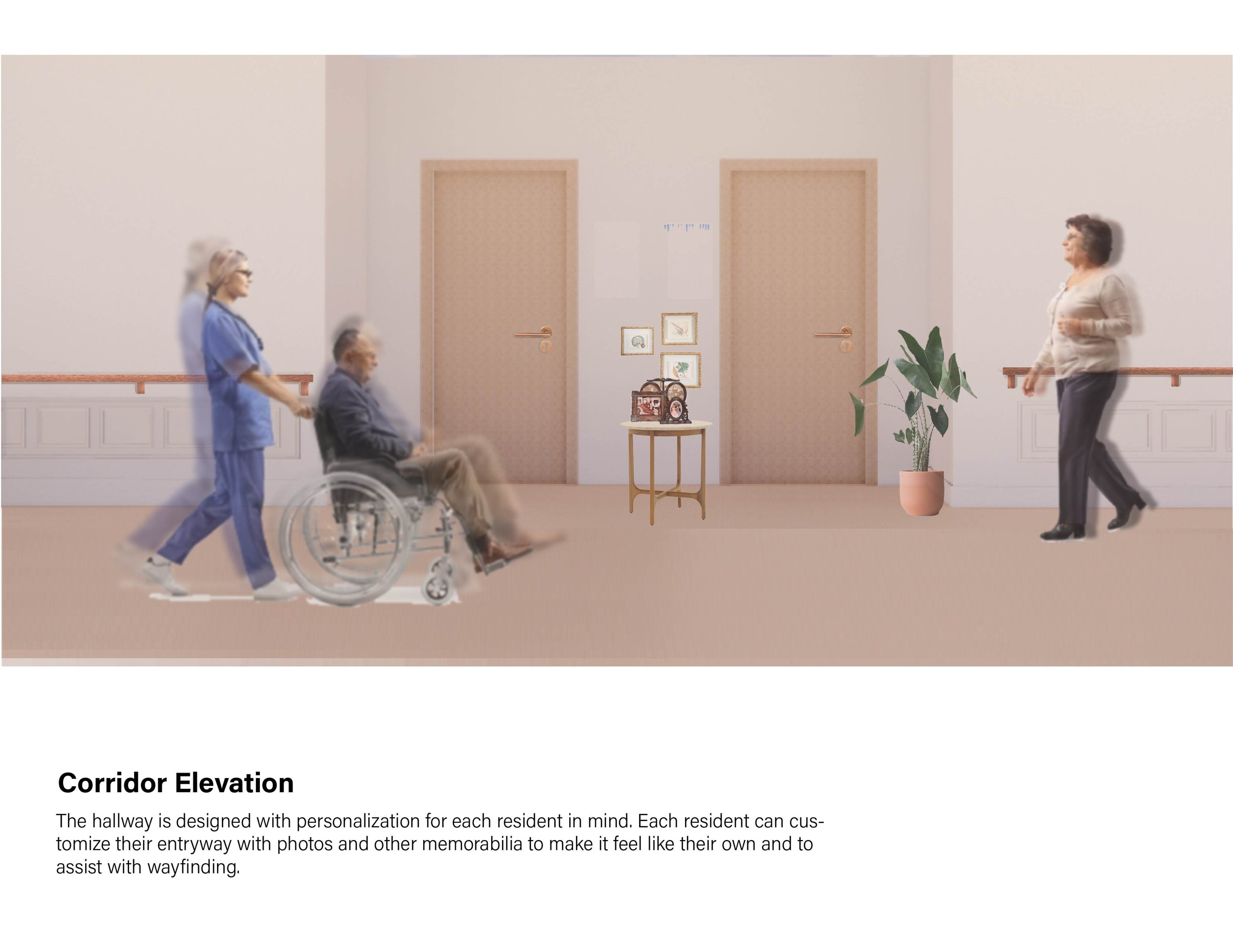
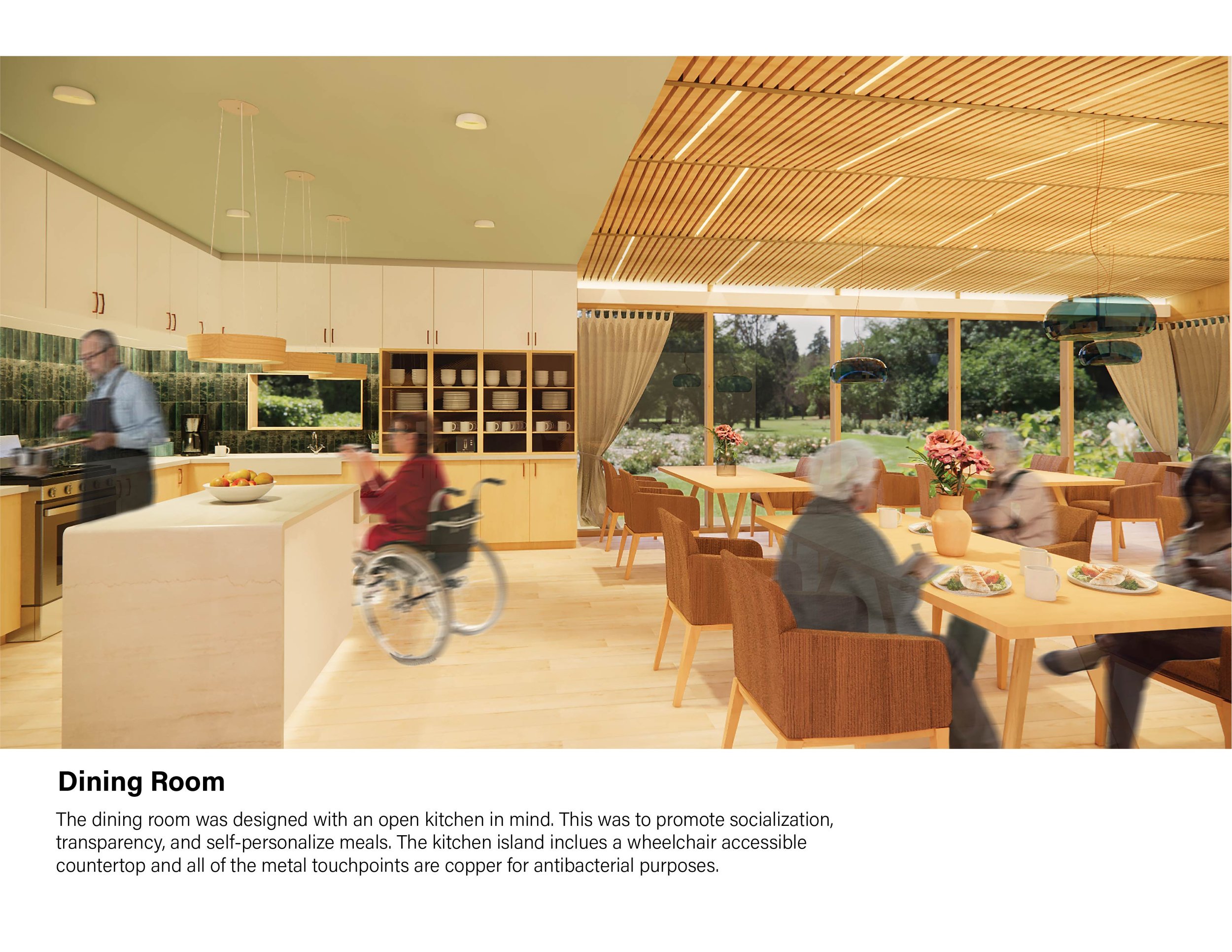
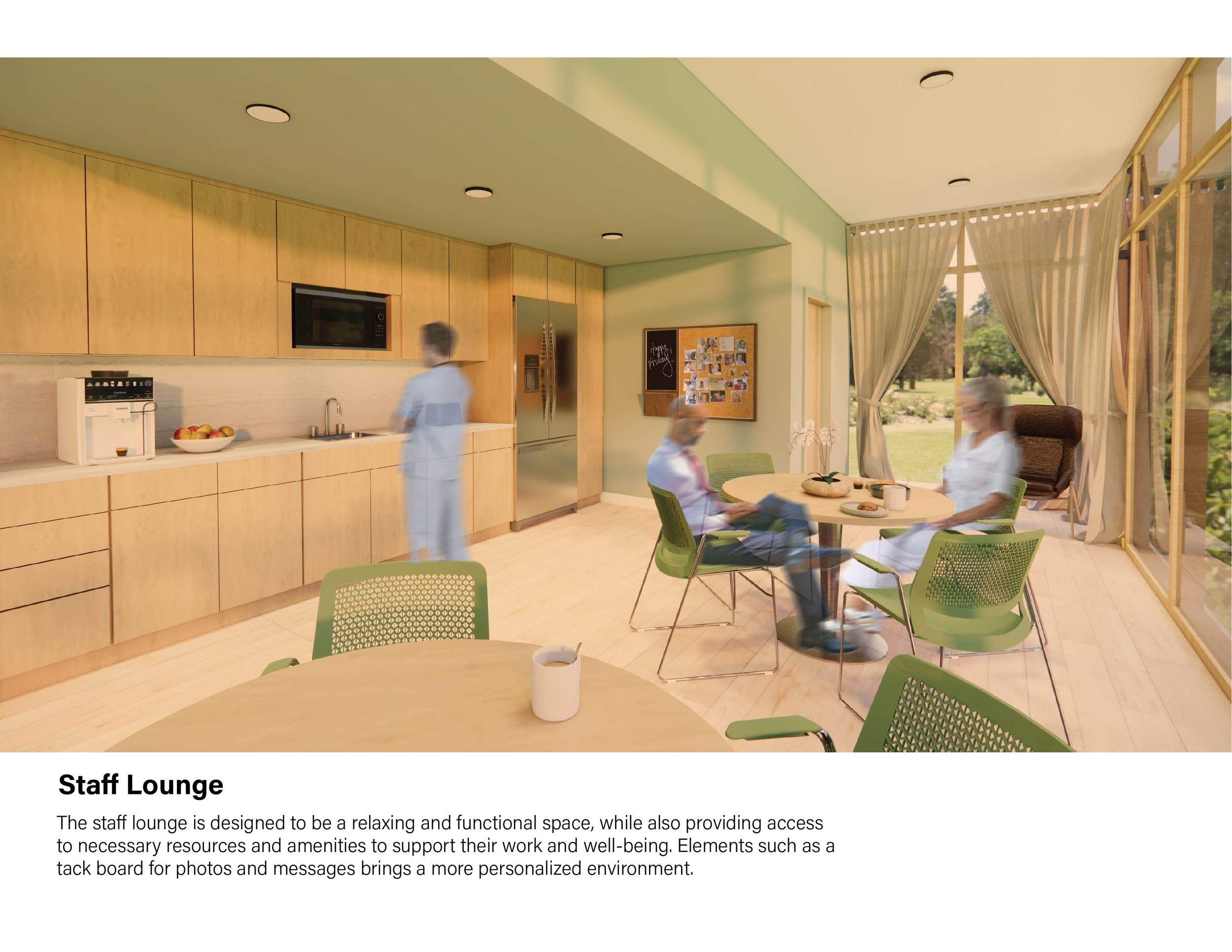
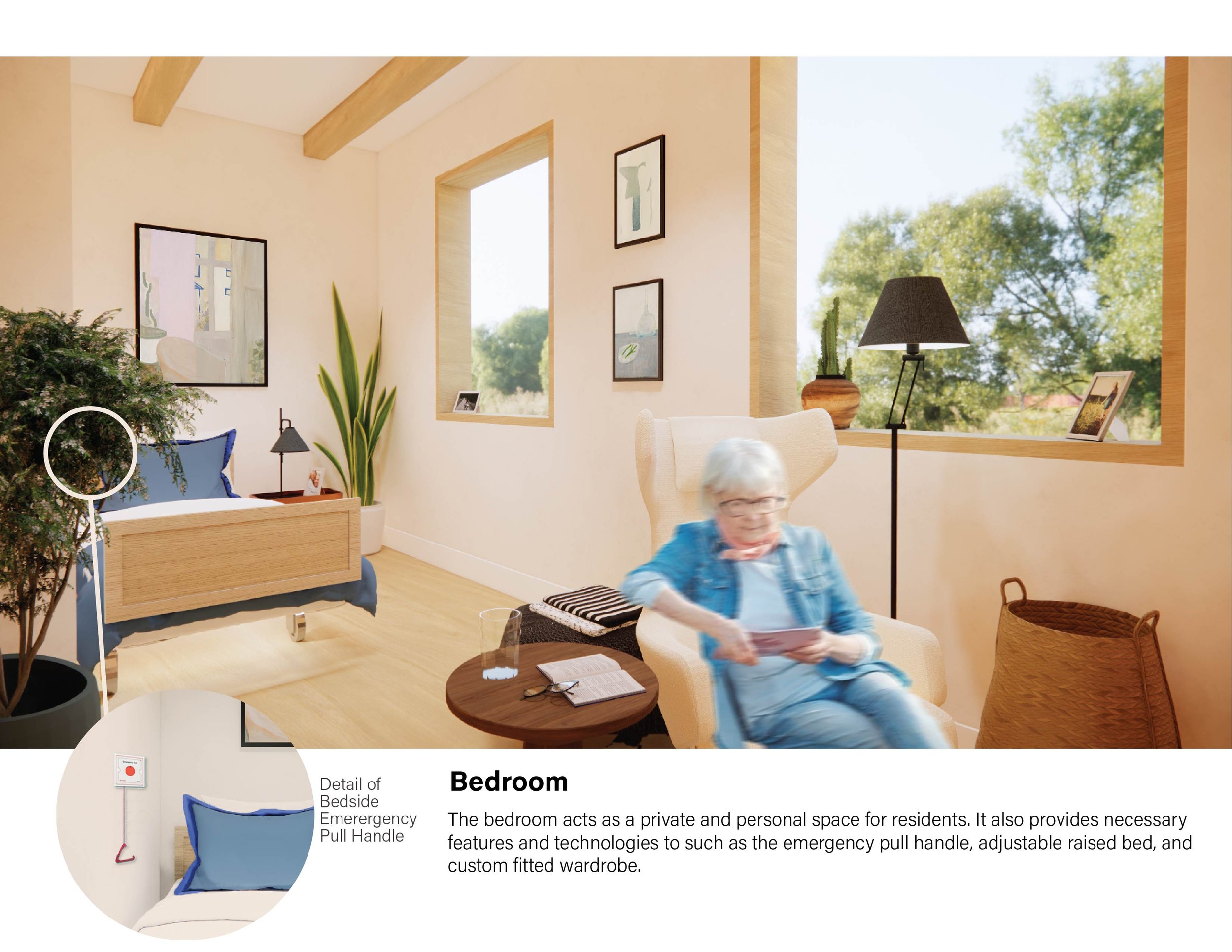
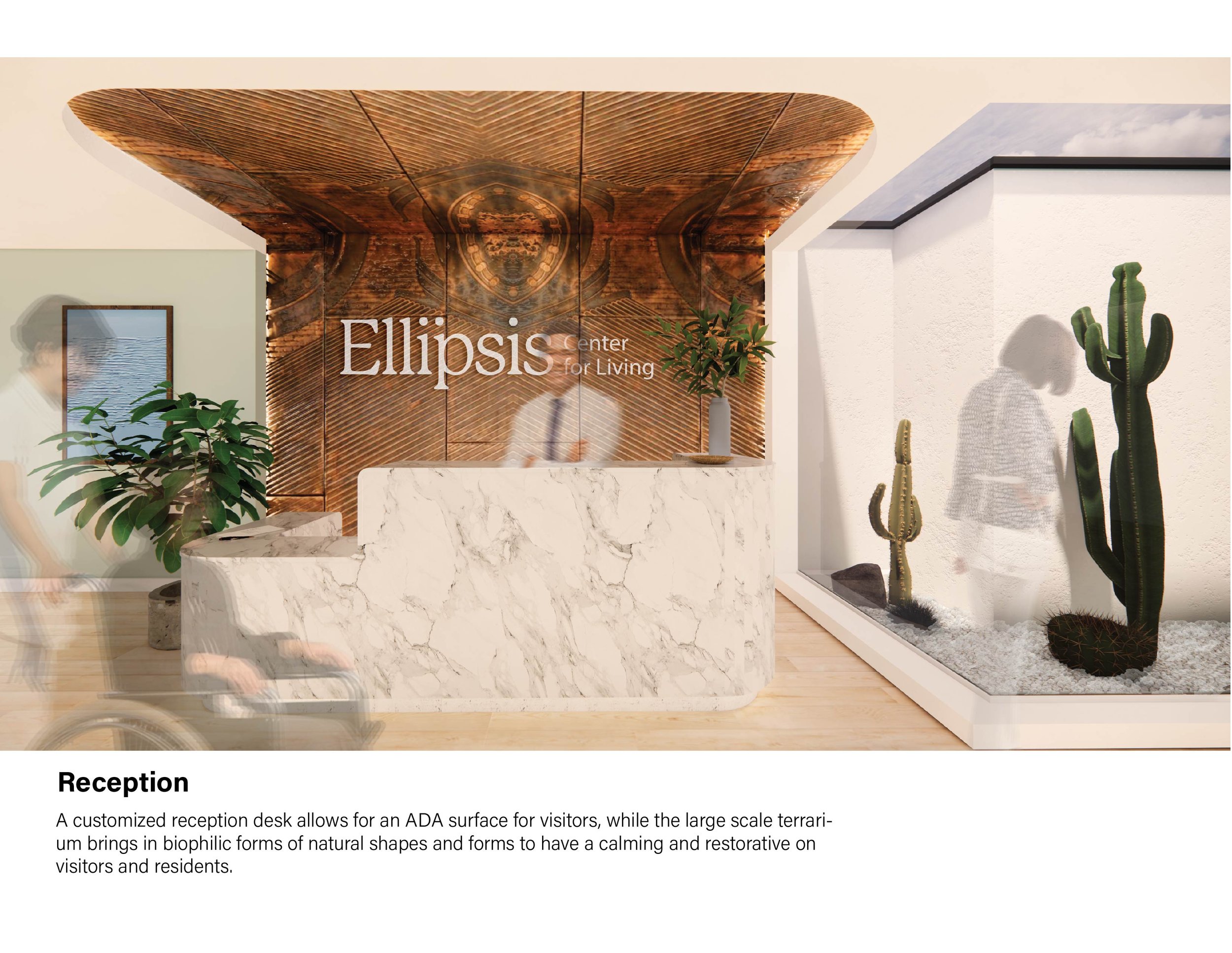
Group members pictured:
Lily Stern
Caleb Cambron
(Not Pictured: Ethan Shao)

